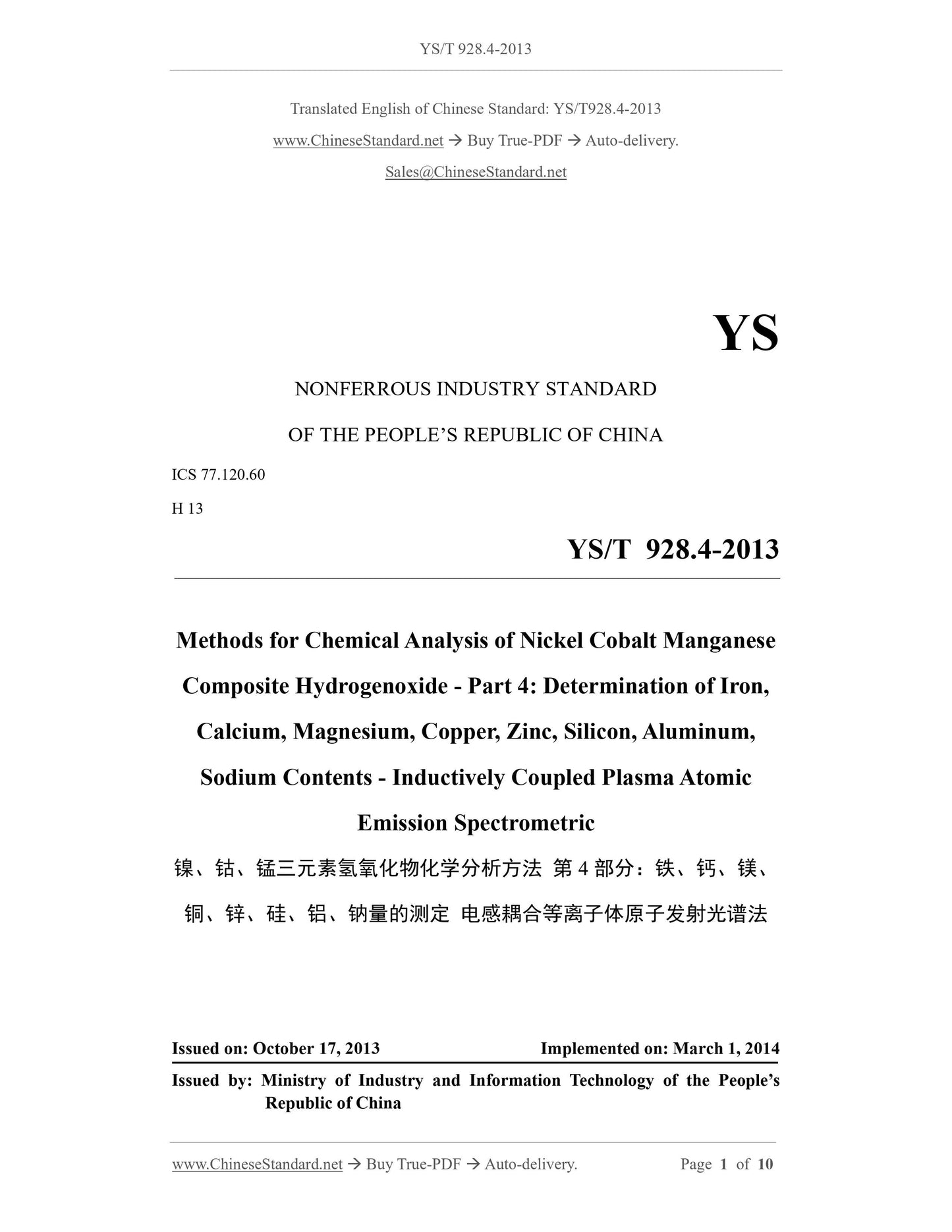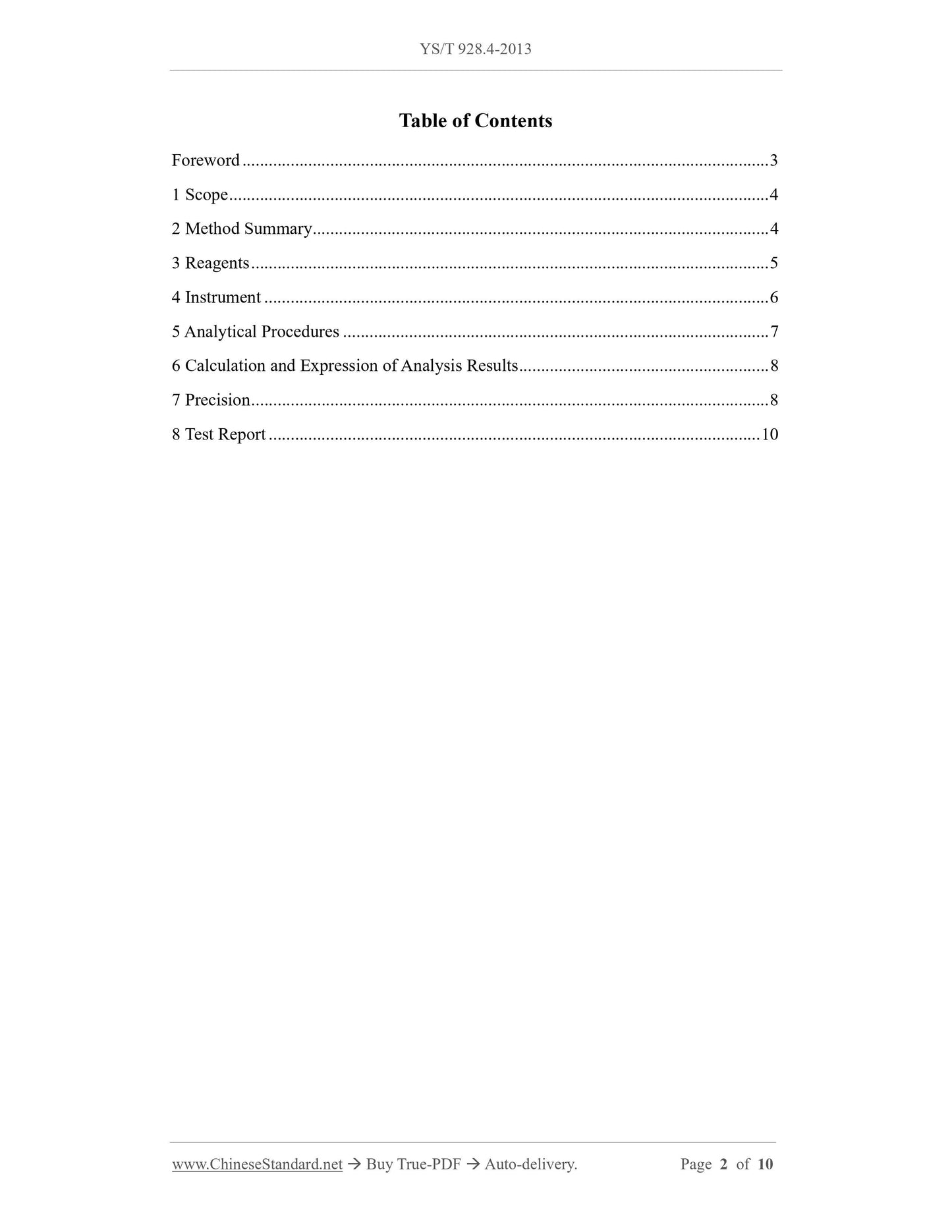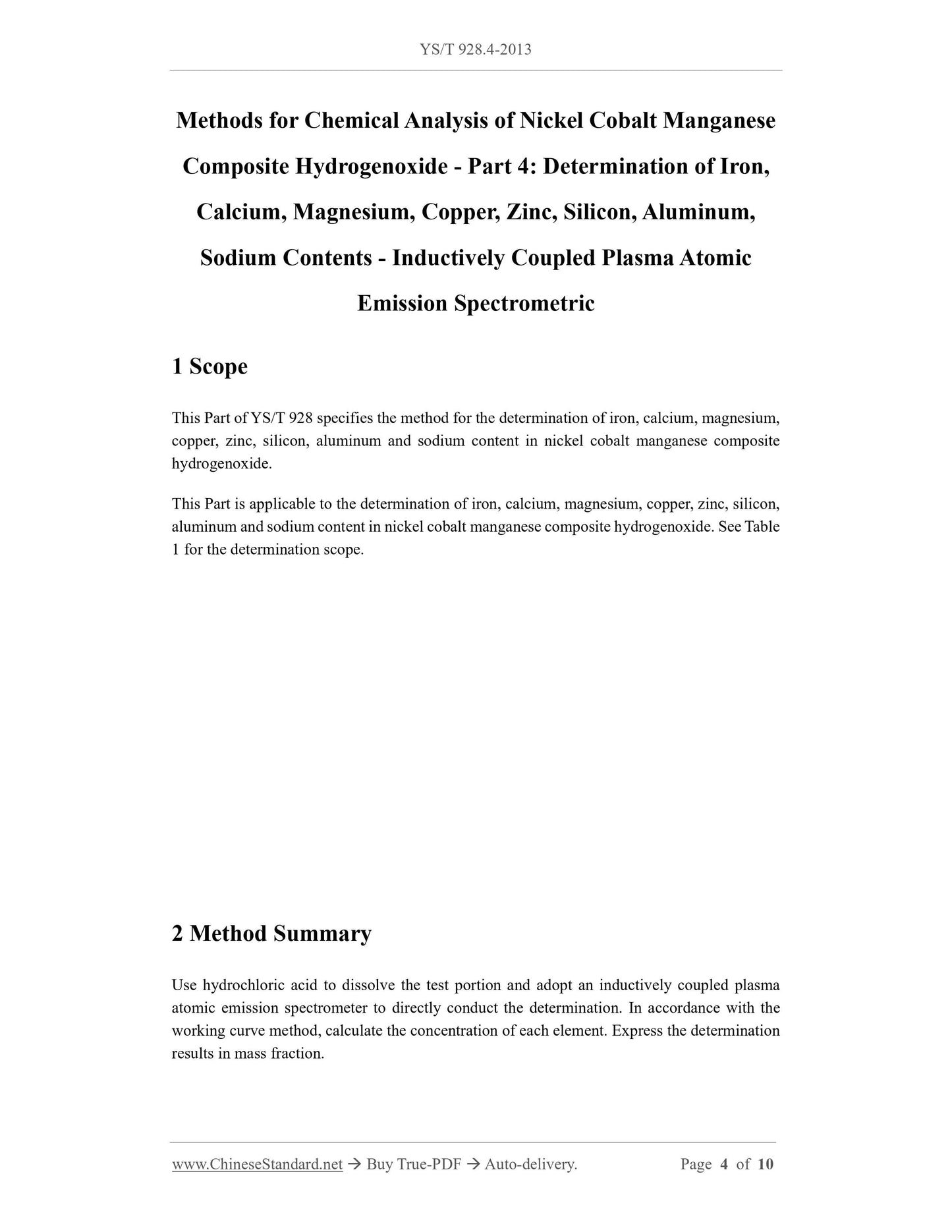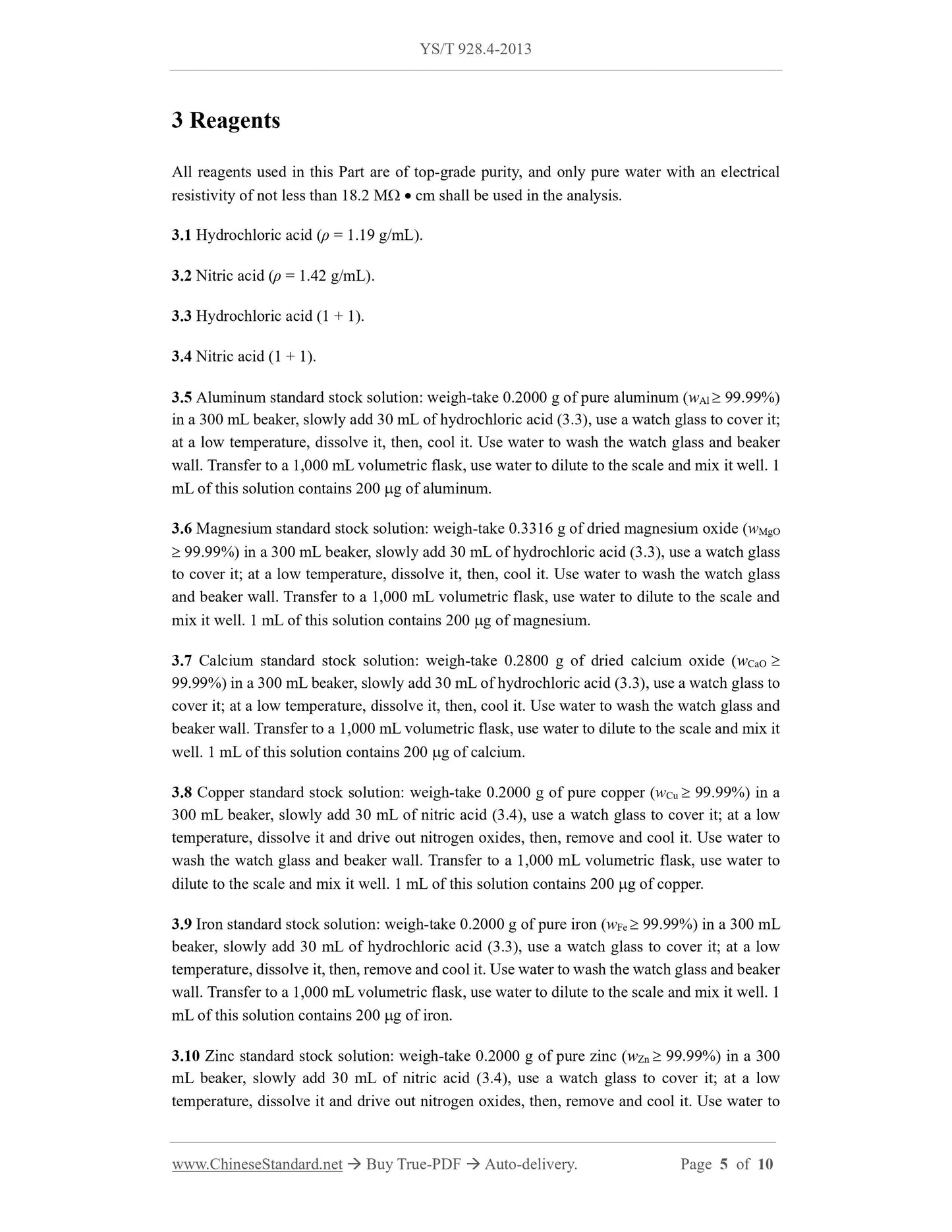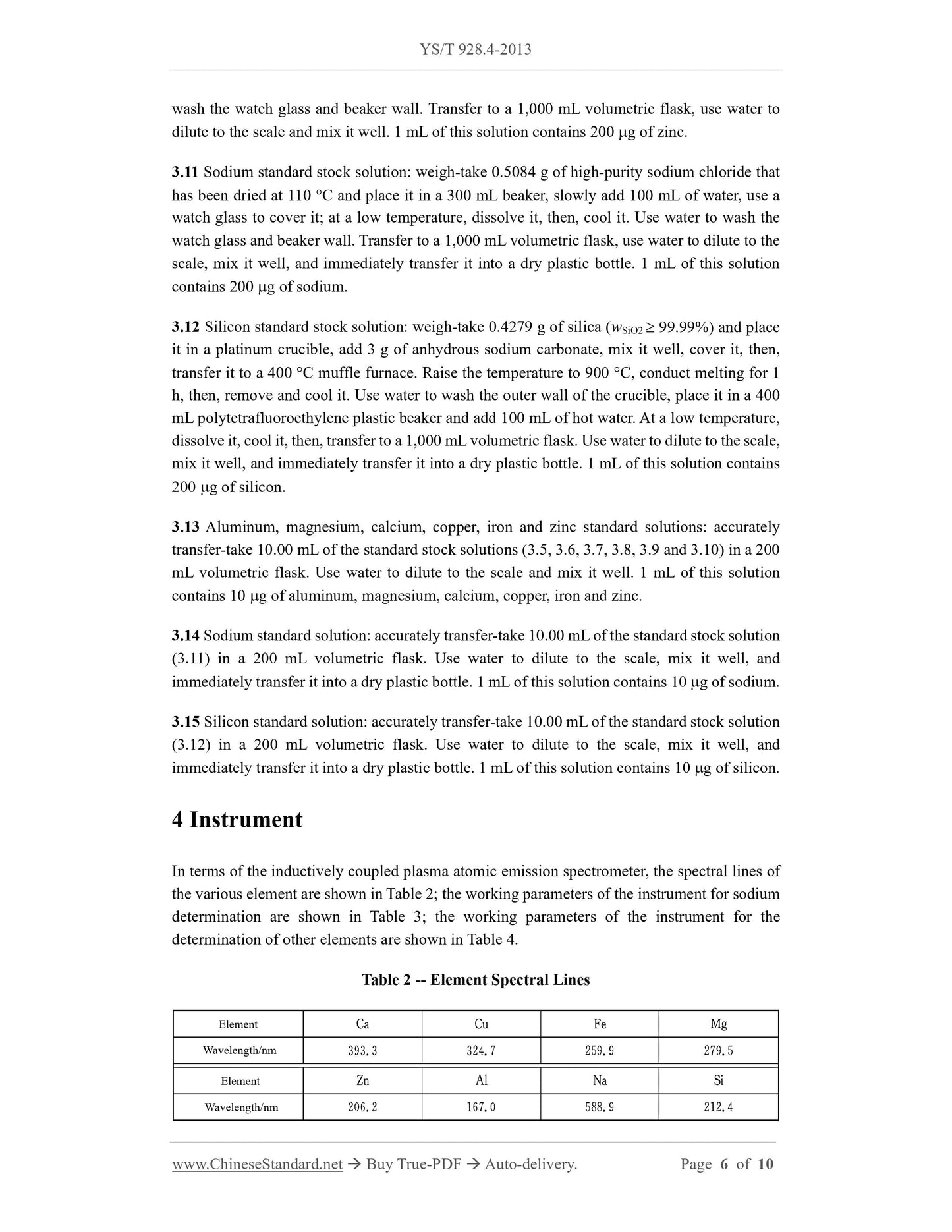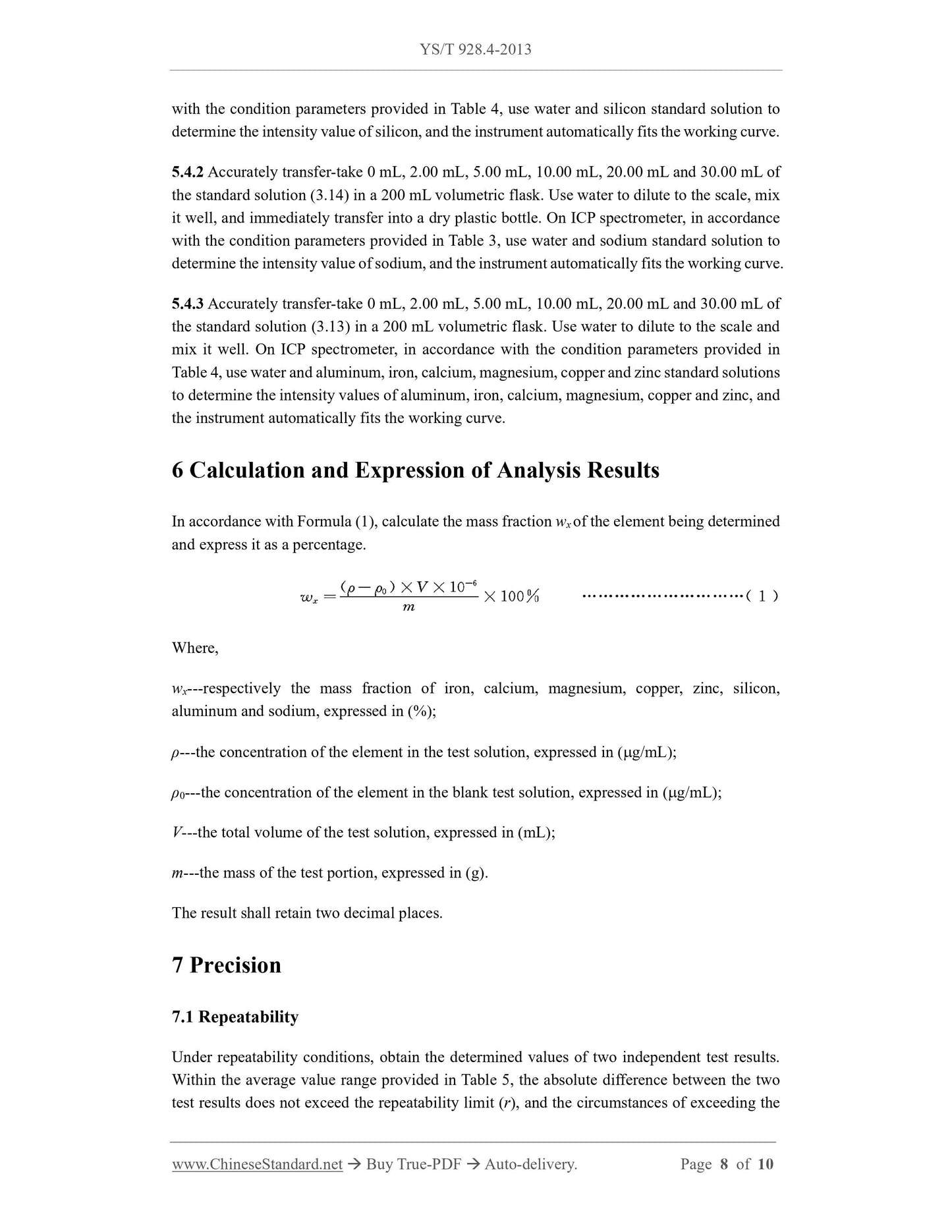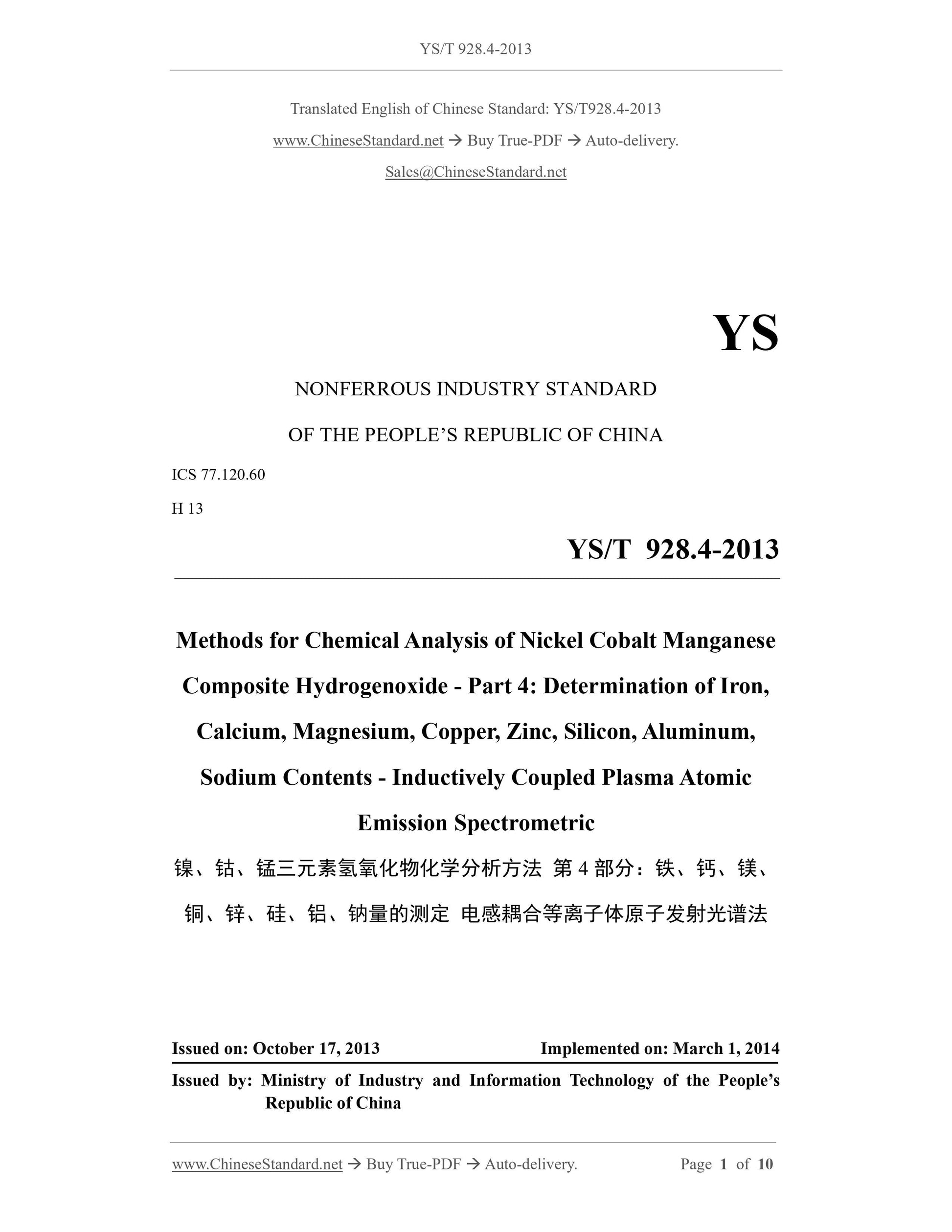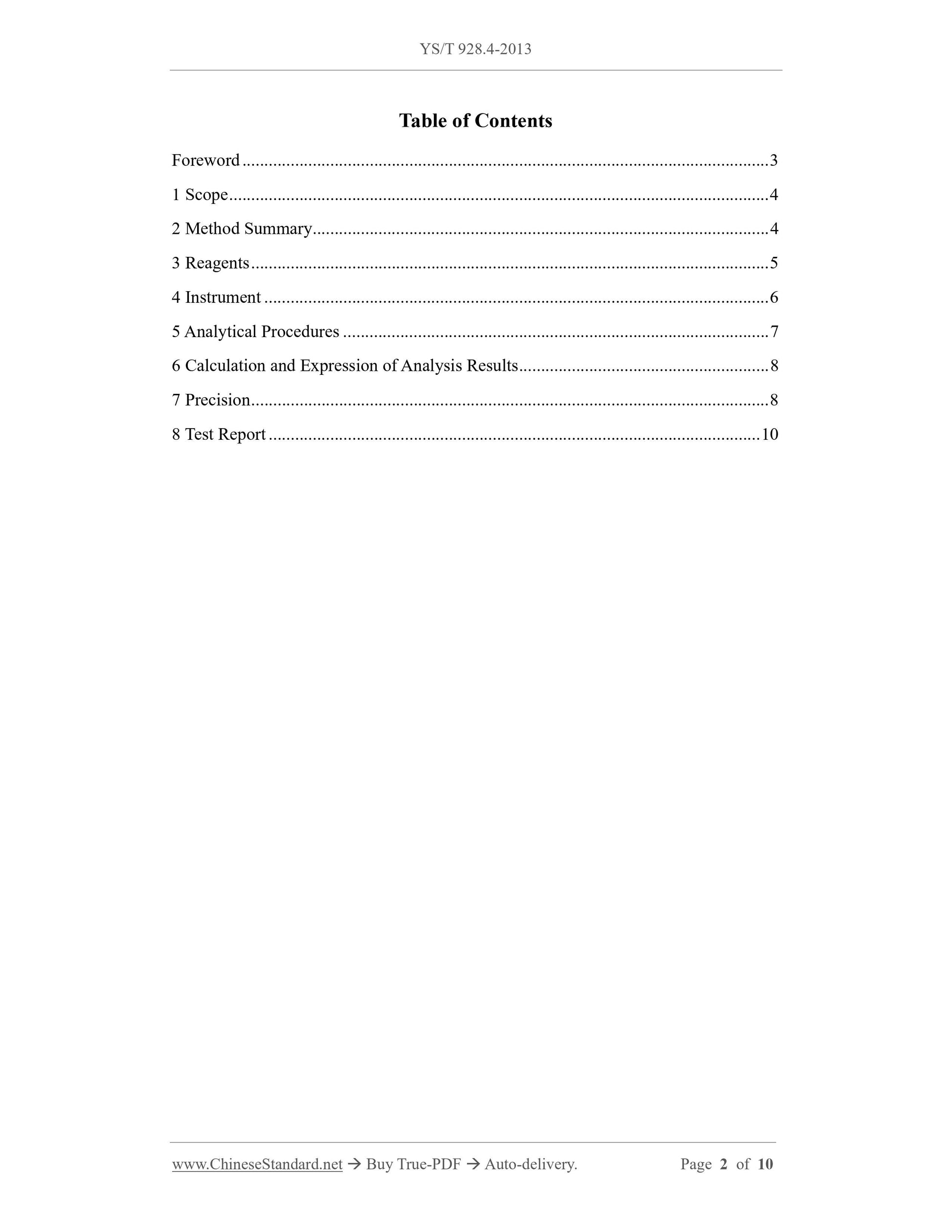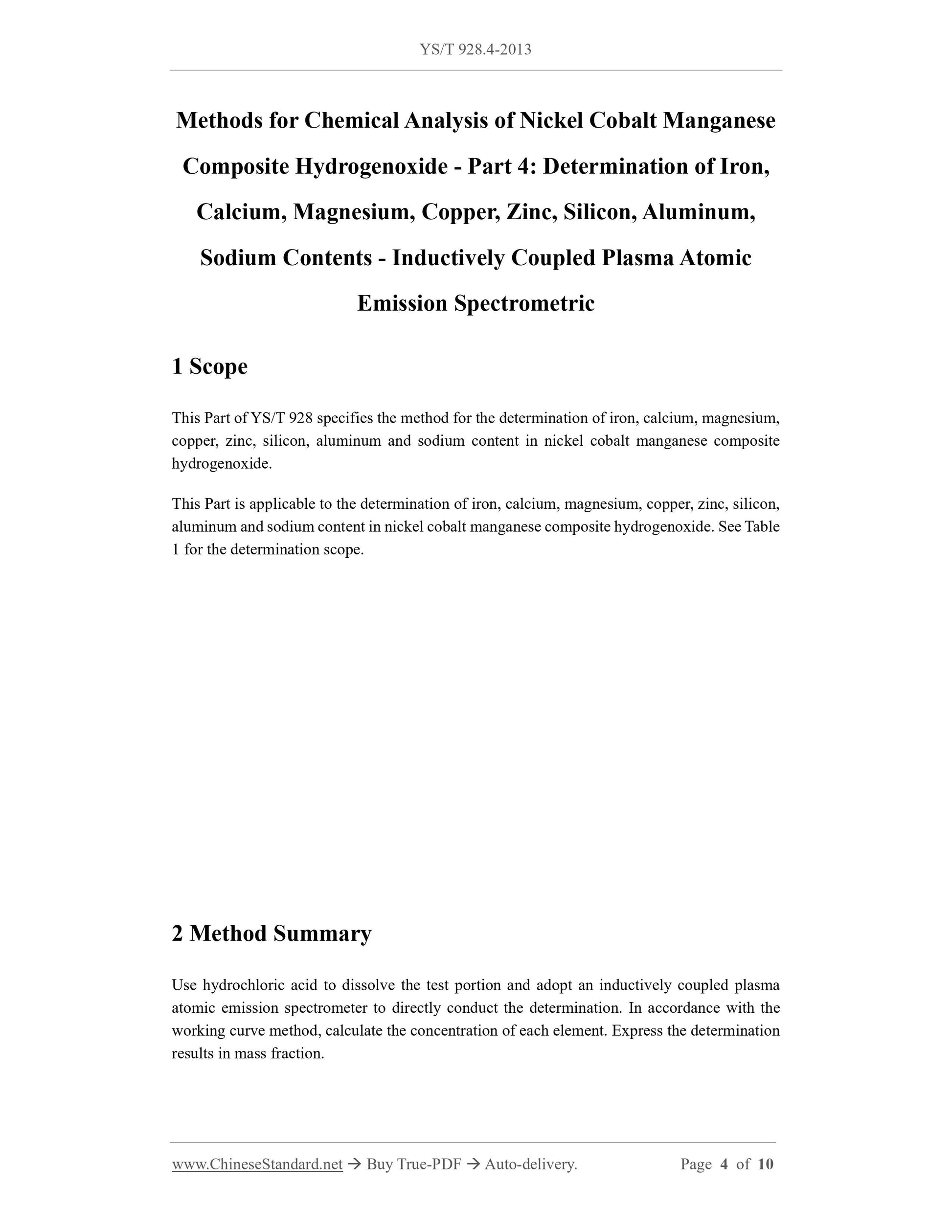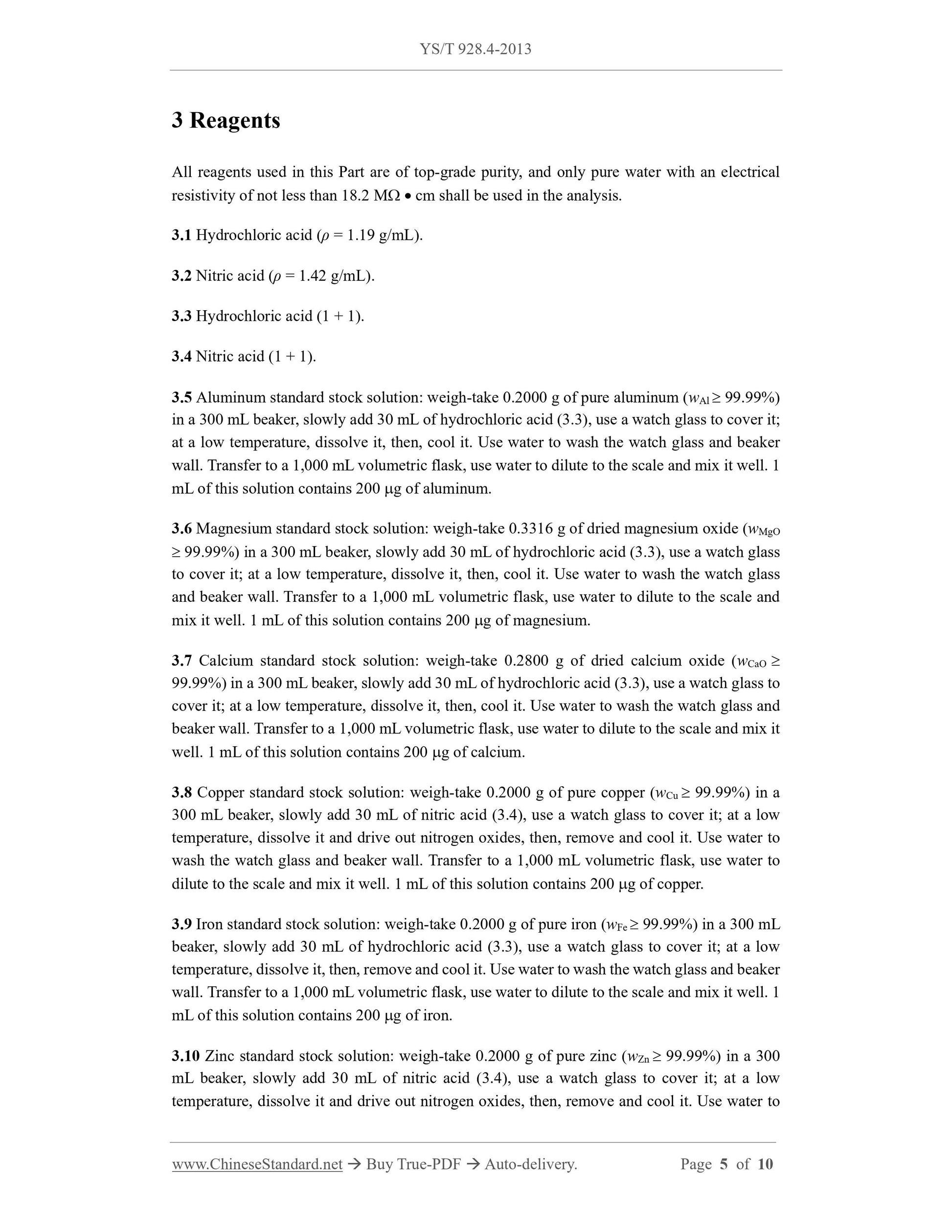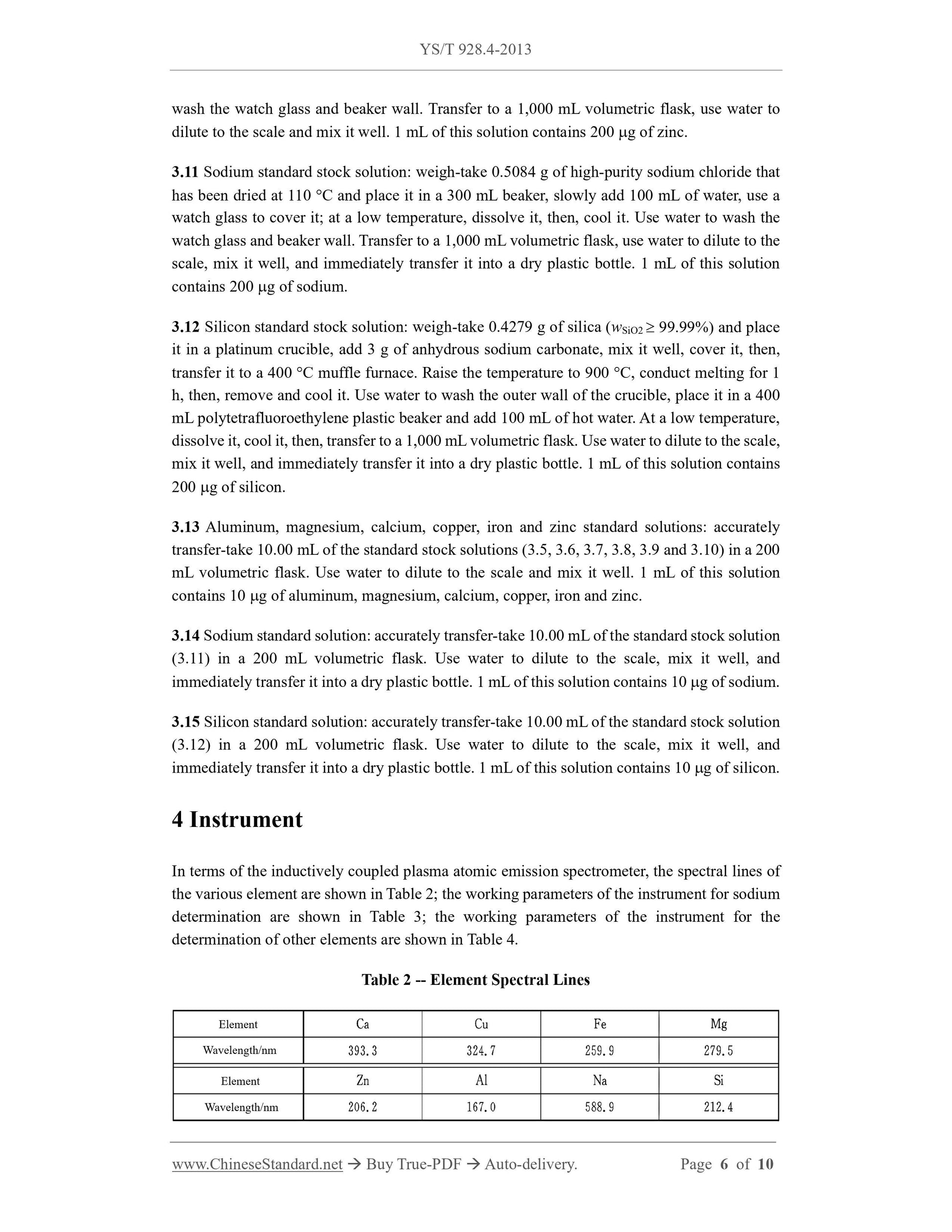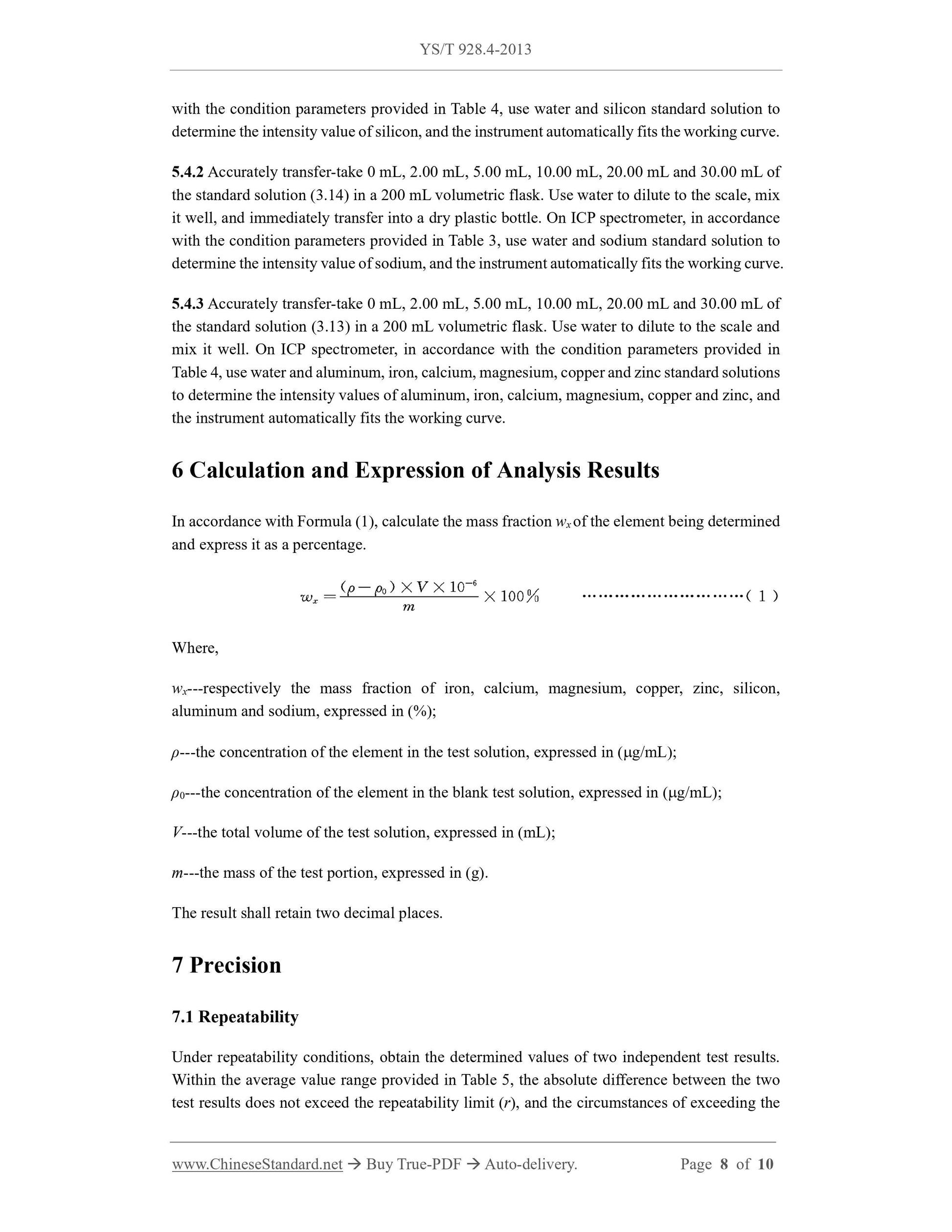1
/
of
6
www.ChineseStandard.us -- Field Test Asia Pte. Ltd.
YS/T 928.4-2013 English PDF (YS/T928.4-2013)
YS/T 928.4-2013 English PDF (YS/T928.4-2013)
Regular price
$170.00
Regular price
Sale price
$170.00
Unit price
/
per
Shipping calculated at checkout.
Couldn't load pickup availability
YS/T 928.4-2013: Methods for chemical analysis of nickel cobalt manganese composite hydrogen oxide - Part 4: Determination of iron, calcium, magnesium, copper, zinc, silicon, aluminium, sodium contents - Inductively coupled plasma atomic emission spectrometric
Delivery: 9 seconds. Download (and Email) true-PDF + Invoice.Get Quotation: Click YS/T 928.4-2013 (Self-service in 1-minute)
Newer / historical versions: YS/T 928.4-2013
Preview True-PDF
Scope
This Part of YS/T 928 specifies the method for the determination of iron, calcium, magnesium,copper, zinc, silicon, aluminum and sodium content in nickel cobalt manganese composite
hydrogenoxide.
This Part is applicable to the determination of iron, calcium, magnesium, copper, zinc, silicon,
aluminum and sodium content in nickel cobalt manganese composite hydrogenoxide. See Table
1 for the determination scope.
Basic Data
| Standard ID | YS/T 928.4-2013 (YS/T928.4-2013) |
| Description (Translated English) | Methods for chemical analysis of nickel cobalt manganese composite hydrogen oxide - Part 4: Determination of iron, calcium, magnesium, copper, zinc, silicon, aluminium, sodium contents - Inductively coupled plasma atomic emission spectrometric |
| Sector / Industry | Nonferrous Metallurgy Industry Standard (Recommended) |
| Classification of Chinese Standard | H13 |
| Classification of International Standard | 77.120.60 |
| Word Count Estimation | 8,820 |
| Regulation (derived from) | Ministry of Industry and Information Technology Bulletin No. 52, 2013; industry standard for filing Notice No. 1 of 2014 (No. 169 overall) |
| Issuing agency(ies) | Ministry of Industry and Information Technology |
| Summary | This standard specifies: nickel, cobalt, manganese hydroxides three elements of iron, calcium, magnesium, copper, zinc, silicon, aluminum, sodium content Determination. This standard applies to: nickel, cobalt, manganese three elements iron, calcium, magn |
Share
